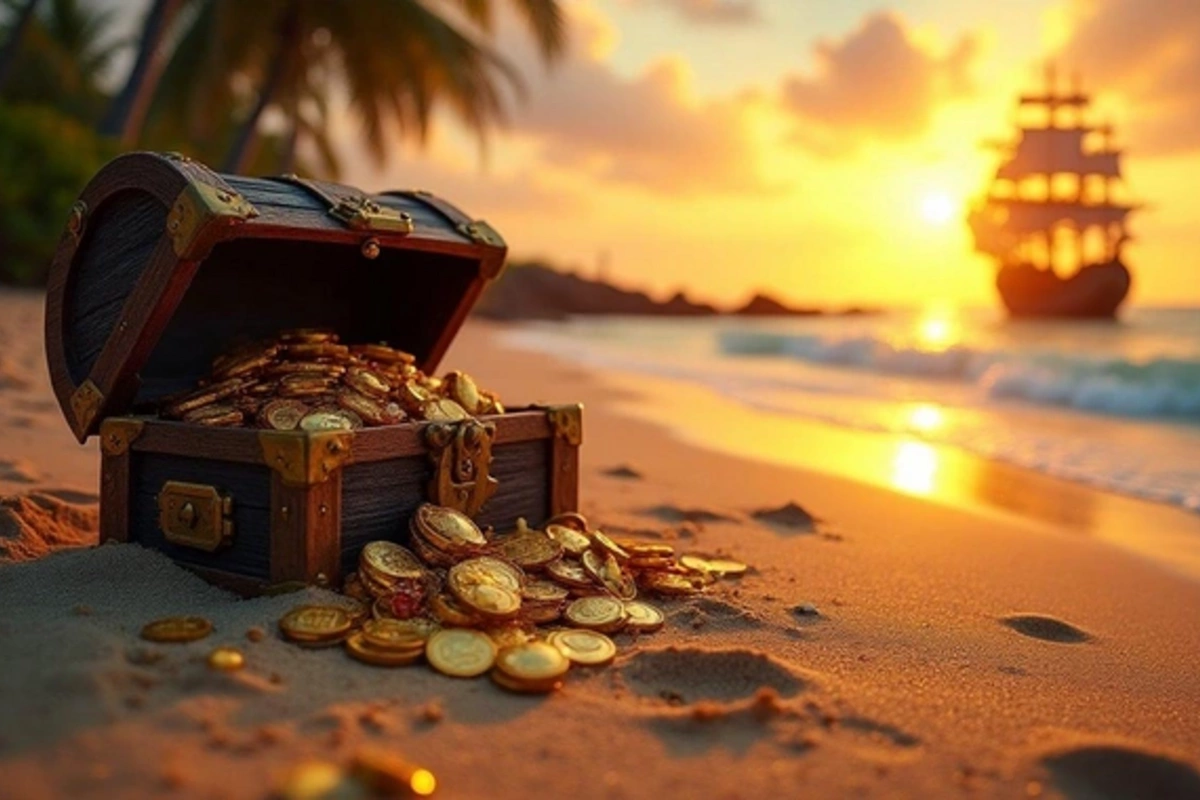17 Jun , 13:15 2025
3

Five Largest Pirate Treasures in History
Pirate treasures remain one of the most intriguing topics in maritime history. Stories of hidden treasures buried on uninhabited islands or sunk with ships continue to excite the minds of researchers and adventure seekers. This article presents five of the largest pirate treasures that have either been found or remain the subject of legends based on historical data.
The ship "Whydah", belonging to pirate Samuel Bellamy, known as Black Sam, was wrecked off the coast of Cape Cod, Massachusetts, in April 1717. On board were fabulous treasures captured in more than 50 daring raids, including gold, silver, and jewels valued at the modern equivalent of $120 million. In 1984, underwater archaeologist Barry Clifford made a sensational discovery, finding the remains of the ship, which became the first confirmed discovery of a pirate vessel in North America. Among the unique findings were silver coins, gold jewelry, and a ship's bell with the engraved name "Whydah." Some of the priceless artifacts are now exhibited at the Piracy Museum in Provincetown.
William Kidd, a Scottish pirate and privateer, is considered one of the most famous sea raiders of the 17th century. His legendary treasure, presumably hidden somewhere on the coast of North America or on Caribbean islands, is estimated at a staggering amount - $180 million in today's prices. In 1699, Kidd was arrested in Boston, and his treasures were never found. In 2015, an impressive 50 kg silver ingot was discovered off the coast of Madagascar, presumably linked to Kidd, but its origin remains a subject of heated debate. Historians continue to meticulously research documents to establish possible locations of the treasure.
Cocos Island, located in the Pacific Ocean off the coast of Costa Rica, is considered the repository of one of the largest pirate treasures. In 1820, pirate Benito Bonito allegedly hid gold, silver, and jewels plundered from Spanish colonies on the island, worth a colossal sum of about $300 million in modern prices. Despite numerous expeditions, including attempts in the 20th century using modern technologies, the mysterious treasure has never been found. Cocos Island remains a magnet for treasure hunters, although access to it is strictly limited due to its national park status.
In July 1715, a Spanish fleet of 11 galleons transporting gold and silver from the New World to Spain was destroyed by a fierce hurricane off the coast of Florida. Among the sunken vessels were ships captured by pirates, including the flagship "Nuestra Señora de la Concepción". The total value of the treasures is estimated at an astronomical sum - $400 million. Since the 1960s, divers and archaeologists have discovered thousands of gold and silver coins, as well as exquisite jewelry. In 2015, the Schmidt family shocked the world with the discovery of gold coins worth $1 million, convincingly confirming that part of the treasure still rests on the seabed.
Edward Teach, better known as Blackbeard, was one of the most fearsome pirates of the Caribbean. His formidable flagship, "Queen Anne's